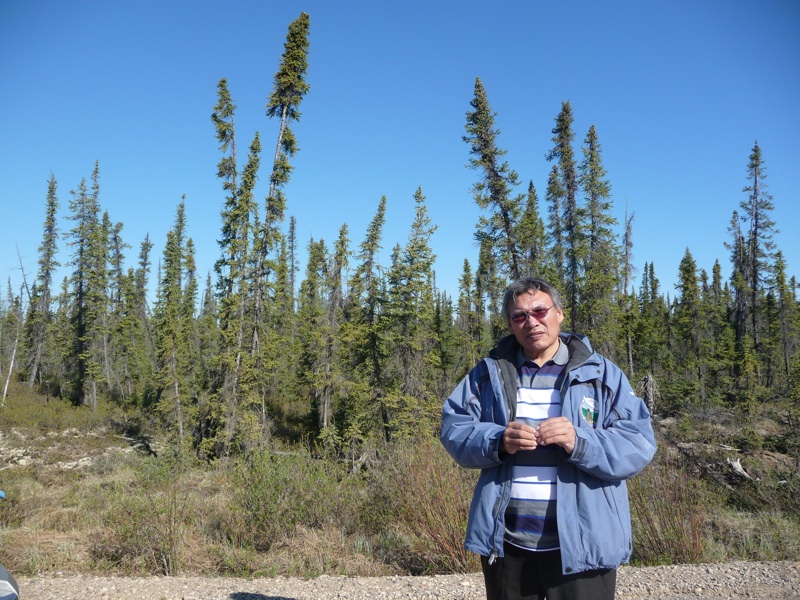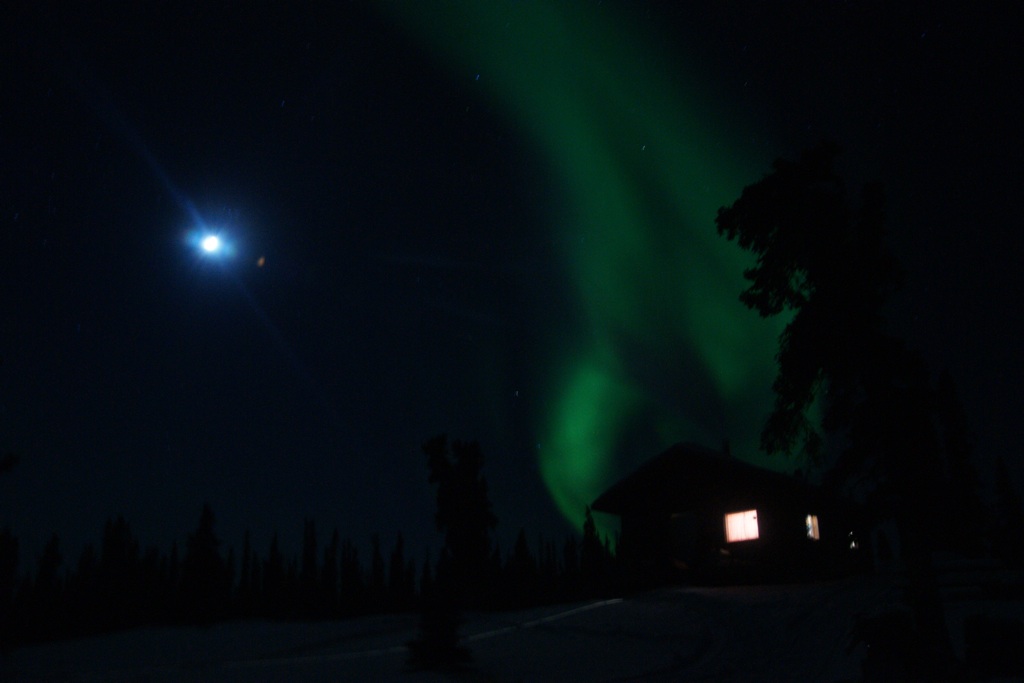Edırı Nę́nę́ – Our land
The traditional territory of the Sahtúgot’ı̨nę is expansive, encompassing the Sahtú watershed and beyond. As part of the land claim process, the boundaries of the Délı̨nę District were defined as encompassing the core of this territory. The community of Délı̨nę is situated on the west shore of Sahtú (Great Bear Lake), at 65°112’ North and 123° 25’ West, and is the only continuing settlement around Sahtú (see map 2). The Arctic Circle runs through the northern part of Great Bear Lake.
Map 2
The watershed of Sahtú, Great Bear Lake, is a great inland sea, the 9th largest freshwater lake in the world. It is traversed by the Interior Plains that formed the ancient geological core of the North American continent, and the Bear Province of the Precambrian Shield to the east. The surface of the landscape is largely scoured by the glaciers that covered the area 110,000-10,000 years ago. This was an era marked by strong and periodic changes in global climate. A huge lake was formed as the glaciers melted. The retreat of the glaciers caused the land to rebound or lift, and eventually the giant lake shrank – leaving behind Lake Athabasca, Great Slave Lake, and Sahtú (Great Bear Lake), along with numerous smaller lakes, all draining into Dehcho (Mackenzie River) and the Arctic Ocean. Now the area surrounding the lake is surfaced mainly with “till,” a glacial sediment combining a mixture of clay, sand, gravel and boulders.
The watershed is an ecologically rich area of the Taiga Plains ecoregion, straddling the Northern and Central Great Bear Plains (High and Low Subarctic subregions). Extensive peatlands form where drainage is poor. Forest fires have left a mosaic of slow-growing white and black spruce, poplars, and shrubs. In the High Subarctic region, permafrost features forge hummocks and mounds.
Walter Bayha explaining Sahtú Forest Types
The elders tell foundational stories about how the geography and ɂeɂa (laws) of the land were forged by Yámǫréya the man who travelled the world. In one of the best known stories, Yámǫréya chased the giant beavers from Sahtú. The giant beavers were dangerous creatures, swamping canoes and damming lakes and rivers from the northeast shore of Sahtú, down Sahtú Deh (Great Bear River), the outlet of the lake, down Dehcho (Mackenzie River) to the Arctic Ocean – tracing the flow of the Sahtú watershed.
Climate
The Sahtú region has long, cold winters and relatively short, cool summers. The average temperatures in January ranges from -20ºC to -30ºC and in July they ranges from +10ºC to +15ºC. The hours of direct sunshine vary greatly throughout the year, ranging from a bit more than 3 hours in December to more than 22 hours in June. Adding the hours of civil daylight, Sahtúgot’ı̨nę experience 24 hours daylight from May to July.
In winter, the Aurora Borealis, or Northern Lights, can be experienced in the Sahtú region. This spectacular phenomenon is caused by solar winds colliding with particles from the earth’s magnetic field. This results in neon-like lights.
Northern Lights at Ts’ıa (Russel Bay)





